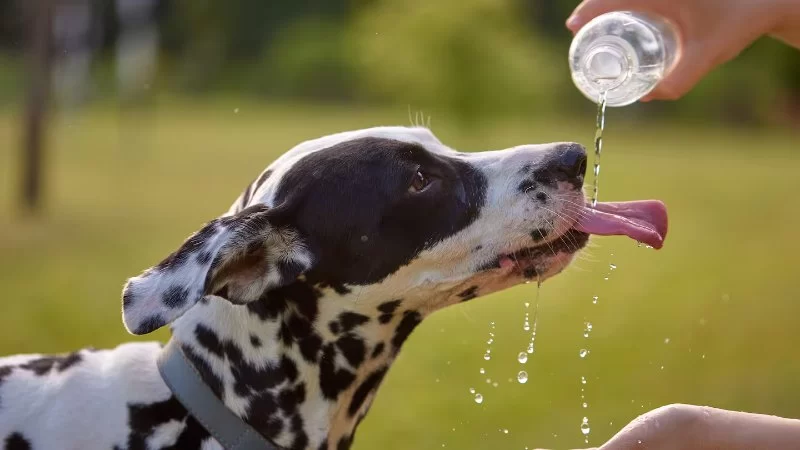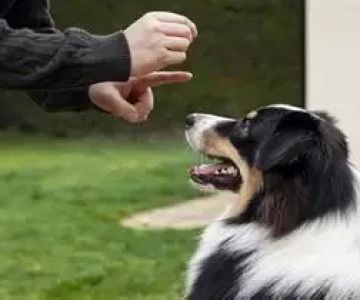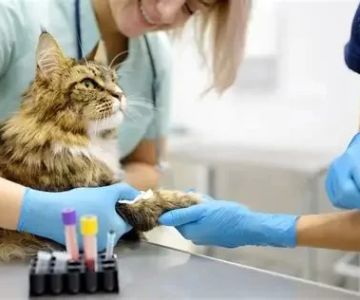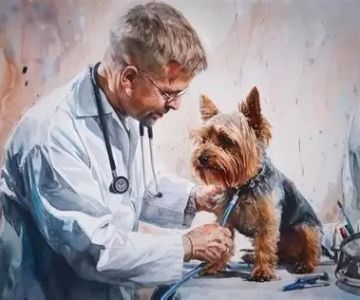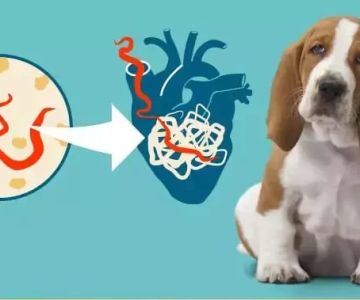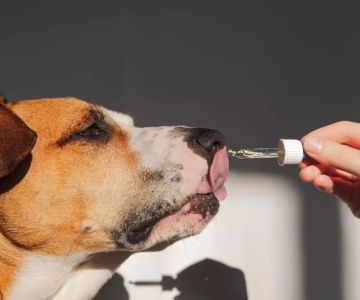- recognizing-heatstroke-symptoms-in-pets
- why-summer-heat-in-the-u-s-poses-a-risk
- natural-remedies-to-prevent-heatstroke-in-pets
- real-stories-and-expert-guidance
- when-to-seek-veterinary-care-immediately
1. Recognizing Heatstroke Symptoms in Pets
Heatstroke in pets is a critical condition that can escalate rapidly if not recognized early. Dogs and cats regulate their body temperature differently than humans. They don’t sweat like we do — they pant and rely on external cooling. During hot and humid U.S. summers, especially in southern states, pets are more vulnerable than ever.
Early warning signs include excessive panting, drooling, rapid heartbeat, vomiting, weakness, or disorientation. As the condition worsens, pets may collapse or even suffer seizures. Knowing these signs is the first step in prevention. Being proactive could mean the difference between a quick recovery and a tragic loss.
2. Why Summer Heat in the U.S. Poses a Risk
2.1 Regional Differences and Risk Zones
The U.S. has varied climates — from the dry heat of Arizona to the oppressive humidity in Florida. These extremes pose distinct threats to pets. In cities like Phoenix, pavement temperatures can exceed 150°F, burning paws in seconds. In Houston, the humidity makes it harder for dogs to cool down through panting.
2.2 Urban Environments and Heat Traps
Urban living can amplify heat exposure. Many American pet owners live in apartments without access to shaded yards. Rooftop walks, hot cars, and unventilated spaces become common sources of overheating. In some heartbreaking cases, pets left in vehicles during errands, even for just ten minutes, have succumbed to heatstroke — despite outside temps being "only" 80°F.
3. Natural Remedies to Prevent Heatstroke in Pets
3.1 Herbal Cooling Sprays and Teas
Mint and chamomile have natural cooling effects. You can brew a diluted tea and spray it lightly onto your dog’s coat (avoid face and eyes). Some U.S. pet parents also infuse drinking water with a hint of peppermint, which may help internally cool the body. Always ensure ingredients are safe and non-toxic for pets before use.
3.2 Coconut Water and Electrolyte Balance
Natural coconut water (unsweetened and additive-free) can replenish lost electrolytes. On hot days, serving small amounts can help keep your dog or cat hydrated. Be mindful of potassium levels and never overdo it — moderation is key. Hidden Brook Veterinary offers tailored hydration solutions and supplements, including vet-approved rehydration formulas.
3.3 DIY Cooling Pads and Natural Materials
Instead of using chemical cooling mats, fill a pillowcase with frozen rice or flaxseed. These retain coolness and are safe for your pet to lie on. Place them in shaded areas or under a fan for enhanced effect. Natural cotton and breathable linen beds are better than synthetic ones during summer.
3.4 Adjusting Feeding Times and Natural Treats
Feed your pet during cooler hours, such as early morning or late evening. Frozen treats made from pureed watermelon or unsweetened yogurt can help with internal cooling. You can find pet-safe molds or recipes at Hidden Brook Veterinary that include vet-approved ingredients for hot weather support.
4. Real Stories and Expert Guidance
4.1 A Close Call in Atlanta
Last July, a pet owner named Sarah from Atlanta shared her story at a local pet fair. Her labradoodle, Benny, collapsed after a late-afternoon walk. Fortunately, Sarah had been educated on heatstroke signs and quickly wrapped Benny in cool, damp towels and rushed him to Hidden Brook Veterinary. The quick action saved his life — a reminder that knowledge truly is power.
4.2 Advice from Professionals
Dr. Emily James at Hidden Brook Veterinary emphasizes a proactive approach. “We always tell clients: if it’s too hot for your bare feet, it’s too hot for paws,” she explains. The clinic offers personalized summer care plans for pets based on breed, age, and regional climate. Preventative care includes everything from hydration strategies to natural repellents and environment adjustments.
5. When to Seek Veterinary Care Immediately
5.1 Warning Signs That Require Emergency Attention
If your pet shows signs of collapse, confusion, dark red or pale gums, or rapid breathing that doesn’t slow down, these are red flags. Don’t wait — immediate veterinary care is essential. While natural remedies can aid in prevention, they are not a replacement for urgent care when symptoms appear.
5.2 Hidden Brook Veterinary Support
Hidden Brook Veterinary not only treats heatstroke cases but helps you prevent them. Their range of holistic products, from electrolyte-balanced treats to natural cooling sprays, are curated for the American climate and pet lifestyle. Visiting their clinic or consulting their expert staff can offer peace of mind during the intense summer months.

